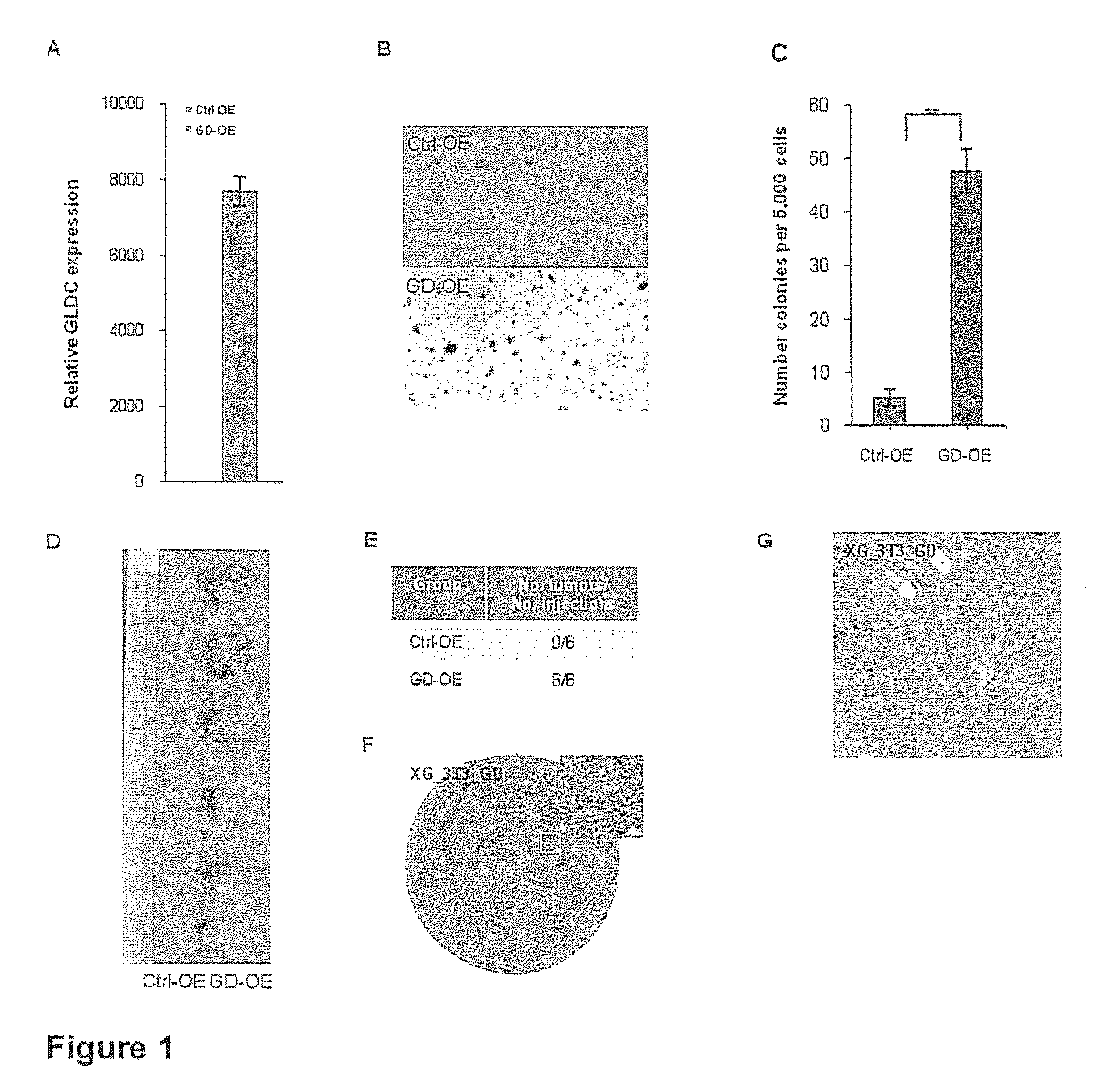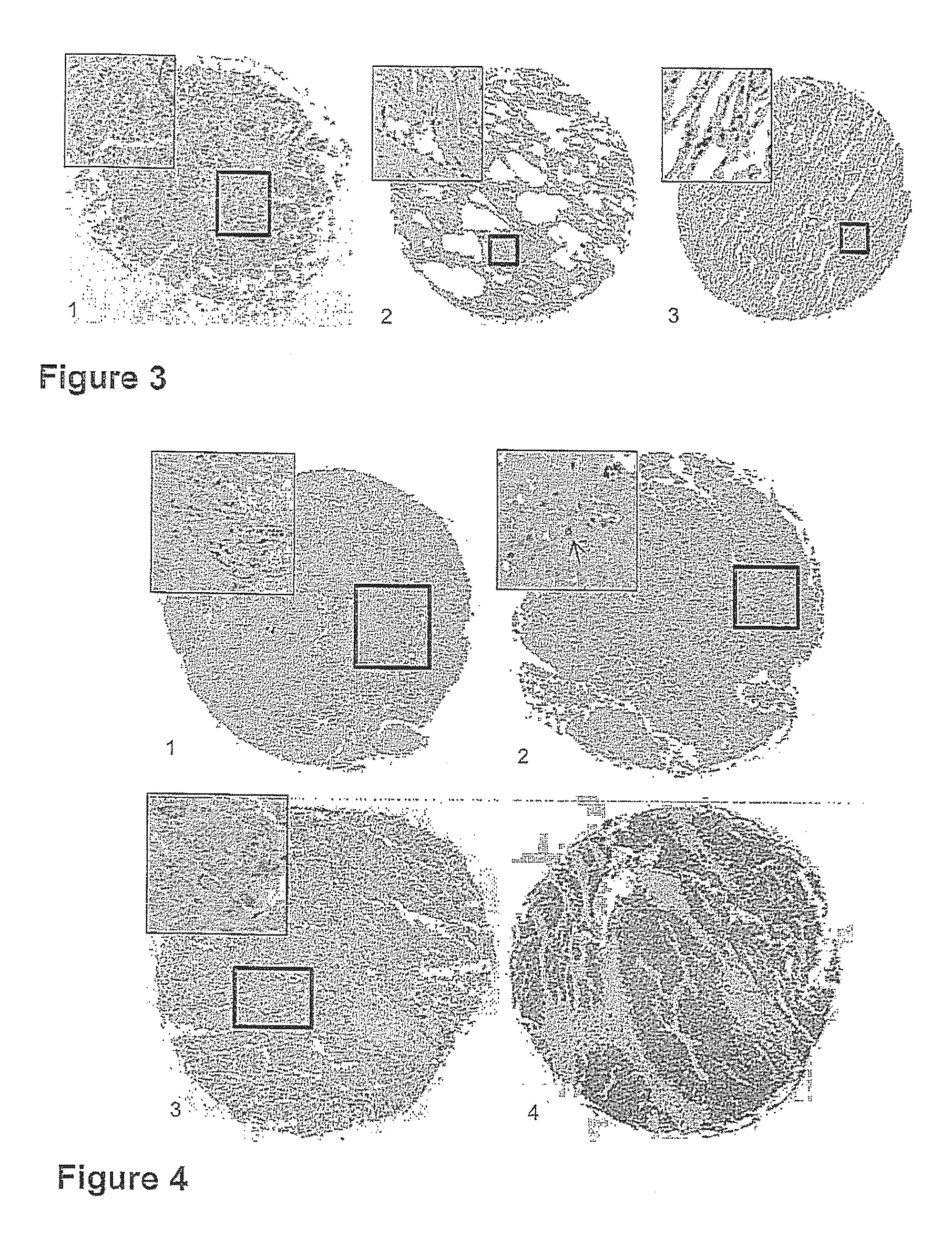Targeting metabolic enzymes in human cancer
a metabolic enzyme and human cancer technology, applied in the field of diagnostic or prognostic biomarkers or biomarkers, can solve the problems of toxic side effects, relapse of patients often exhibiting more aggressive cancer progression, and little or no alternative treatments available, so as to improve the difficulty
- Summary
- Abstract
- Description
- Claims
- Application Information
AI Technical Summary
Benefits of technology
Problems solved by technology
Method used
Image
Examples
examples of specific embodiments
[0299]Here we show that glycine metabolism and the metabolic enzyme glycine decarboxylase (GLDC) drives TICs and tumorigenesis in non-small cell lung cancer (NSCLC). Using CD166 as a surface marker and NOD / SCID Il2ry− / − mice as xenotransplantation recipients, we isolated lung TICs from a broad range of primary NSCLC tumors (stage I-III). Primary lung TICs express high levels of LIN28B, GLDC, and many other glycine / serine metabolism enzymes. Both LIN28B and GLDC were required for lung TIC proliferation and tumor growth. Overexpression of GLDC alone, and other glycine / serine enzymes, promotes cellular transformation both in vitro and in vivo. Metabolomic analysis shows that GLDC overexpression induces dramatic changes in glycolysis and glycine metabolism, leading to changes in pyrimidine metabolism for cancer cell proliferation. In human patients, aberrant upregulation of GLDC is significantly associated with higher mortality from lung cancer, and aberrant GLDC expression is observed ...
PUM
| Property | Measurement | Unit |
|---|---|---|
| survival time | aaaaa | aaaaa |
| survival time | aaaaa | aaaaa |
| time | aaaaa | aaaaa |
Abstract
Description
Claims
Application Information
 Login to View More
Login to View More - R&D
- Intellectual Property
- Life Sciences
- Materials
- Tech Scout
- Unparalleled Data Quality
- Higher Quality Content
- 60% Fewer Hallucinations
Browse by: Latest US Patents, China's latest patents, Technical Efficacy Thesaurus, Application Domain, Technology Topic, Popular Technical Reports.
© 2025 PatSnap. All rights reserved.Legal|Privacy policy|Modern Slavery Act Transparency Statement|Sitemap|About US| Contact US: help@patsnap.com



